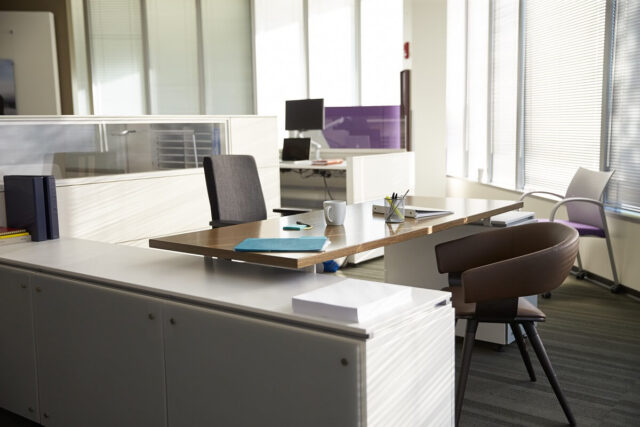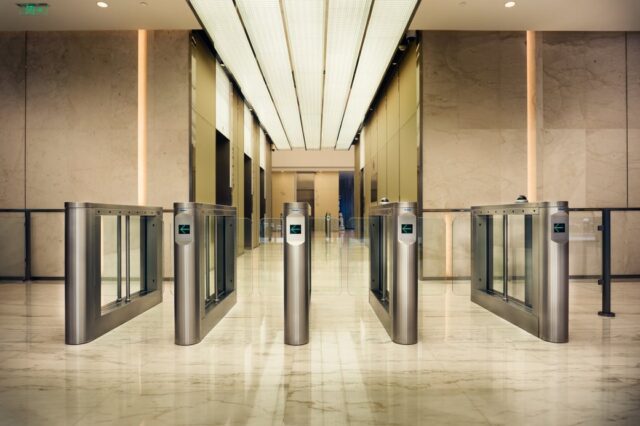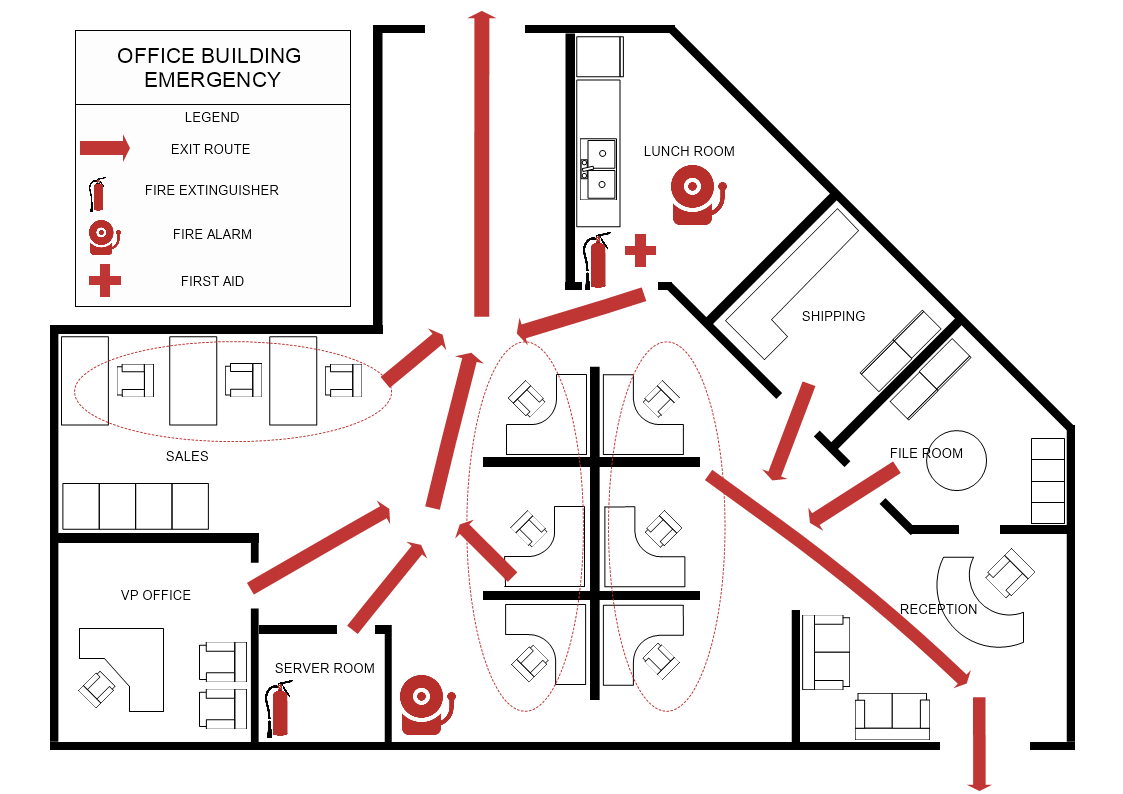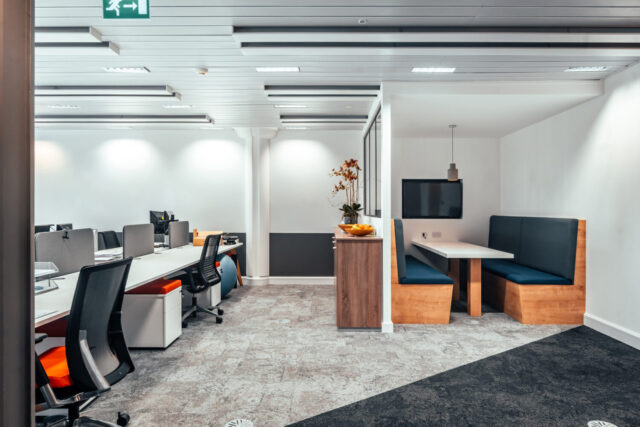
With its sudden and often severe conditions, winter can catch businesses off guard and increase the risk of accidents and even fatalities.
These circumstances pose significant challenges, potentially resulting in expensive repairs or compromising office occupants’ safety and well-being.
Recognizing these potential issues and undertaking proactive preparations for the winter months is important.
This comprehensive guide delves into practical and easy-to-implement tips to prepare your office building against the challenges posed by winter.
So, let’s look at a few precautions to keep the productivity high during the winter months
1. Entryway Safety – Invest in Quality Mats

Begin by investing in high-quality, non-slip mats for the entryways of your office.
Opt for rubberized mats that serve the dual purpose of preventing dirt and hazards from entering while providing an extra layer of safety with their grip. It effectively reduces the risk of slips and falls.
Strategically place these mats at entrances and areas prone to spills, such as bathrooms and break areas.
2. Hygiene Measures – Hand Sanitizer and Soap Stations
A healthy workplace is paramount during the winter to prevent colds and flu from spreading.
Establish hand sanitizer and soap stations throughout the office. Emphasize regular cleaning of shared spaces like kitchens to eliminate germs on frequently touched surfaces.
Promoting employee hygiene can further reduce the risk of illness spreading within the office.
3. Seal the Cold Out – Doors and Windows Maintenance

Gaps around doors and windows allow cold air to infiltrate, impacting comfort and health.
Regularly inspect these entryways for gaps and promptly seal them to maintain a comfortable temperature and prevent potential illnesses.
Consider the long-term benefits of investing in energy-efficient doors and windows for improved insulation and reduced heating costs.
4. Roof Protection – Regular Inspections
The office roof is susceptible to adverse effects from changes in temperature and precipitation during winter.
Regular inspections by professionals like Commercial Roofing Los Angeles are crucial to promptly identify leaks and loose shingles.
Address roof problems promptly to save the business from costly repairs and prevent potential disruptions to daily operations.
5. Outdoor Safety – Monitor Sidewalks and Stairwells

Recognize the significance of maintaining the exterior of the office as much as the interior during winter.
Confirm that sidewalks are clear of snow and ice to facilitate safe entry. Additionally, clear stairwells near entrances and exits to control slips and falls and minimize the risk of more severe injuries.
Utilize environmentally friendly ice melt to enhance safety without causing harm to the surrounding environment.
6. Professional Maintenance – Seek Expert Services
While wear and tear are inherent aspects of a commercial building’s life, regular professional maintenance can significantly extend its lifespan.
Engage the services of property maintenance professionals to identify and address small damages with precision.
This proactive approach ensures that the office remains in excellent condition. You will also be saved from the need for expensive equipment replacements suddenly.
7. Temperature Management – Prevent Freezing Pipes
Maintain an adequate indoor temperature by setting the thermostat to at least 65 degrees Fahrenheit. When leaving for holidays, ensure that windows are closed to prevent damage to building systems.
Regularly enlist the services of a qualified technician to check the heating system’s efficiency throughout the winter months. Also, insulate pipes to prevent freezing, leading to costly damages.
8. Indoor Air Quality – Open Windows for Fresh Air

In cooler weather, take advantage of the opportunity to open windows whenever possible to circulate fresh air. This simple practice aids in removing airborne pathogens and toxins, improving indoor air quality and preventing the spread of illnesses.
9. Seasonal Cleaning – Increase Janitorial Services
Acknowledge the impact of limited outdoor exposure, which can turn office spaces into potential germ incubators during winter.
Increase janitorial services and focus on regularly wiping down handles, surfaces, and shared equipment to limit the spread of germs. Employee education on proper hygiene practices further reduces the risk of illness.
10. Filter Maintenance – Change HVAC Filters
Regularly changing HVAC filters is a crucial step in maintaining a healthy indoor environment.
Make it a seasonal routine and ensure that the air quality and circulation within the office remain optimal, regardless of external temperature conditions.
11. Temperature Control – Optimize Thermostat Settings
Maintain a consistent and comfortable indoor temperature during winter. Optimize thermostat settings to strike a balance between warmth and energy efficiency. Encourage employees to dress in layers, accommodating varying personal preferences for temperature.
12. Emergency Preparedness – Develop a Winter Emergency Plan

Craft a comprehensive winter emergency plan for the office, encompassing evacuation routes, emergency contacts, and procedures for potential power outages or extreme weather events.
Regular drills must be conducted to ensure everyone is familiar with the established protocols.
13. Lighting Enhancements – Maximize Natural Light
Maximize natural light within the office space with daylight decreasing during winter.
Open blinds or curtains during the day to allow sunlight in. Reduce the reliance on artificial lighting. Adequate lighting also helps combat Seasonal Affective Disorder (SAD).
14. Workspace Comfort – Provide Warmth Solutions
Ensure that employee workspaces are equipped with effective warmth solutions. Consider providing space heaters or thermal desk accessories.
This proactive approach acknowledges individual comfort needs and fosters a more accommodating and productive work environment.
15. Vehicle Maintenance – Support Employees’ Commutes
Researchers reveal that 70 percent of ice and snow-related fatalities occur in automobiles, while 25 percent happen to those caught outside during storms.
Encourage employees to winterize their vehicles by checking tire conditions, antifreeze levels, and brakes. Provide information on local road conditions and transportation alternatives during inclement weather.
16. Furniture Arrangement – Optimize Workspace Layouts

Carefully review and optimize the office furniture arrangement to ensure efficient heat distribution. Avoid placing desks near drafty windows or doors, and consider rearranging workspaces for improved warmth circulation.
Conclusion
Preparing your office for winter involves a comprehensive and multifaceted approach.
By diligently implementing these tips, you not only enhance the overall winter readiness of your workplace but also create a safer, more comfortable, and ultimately more productive environment for everyone.
Remember, a well-prepared office prevents potential issues and significantly contributes to overall health during the challenging winter months.









